Dadamaino
1935
She was born in Milan.
1957
She knows Piero Manzoni and among them is a profound friendship. She exhibits the first abstract-informal work in collective exhibitions.
1958
She adheres to the Milanese avant-garde that has as its meeting point the Jamaica Bar in Brera. In the artists' environment she is known only with the name Dada (diminutive of Eduarda).
Performs the first works entitled Volumes: canvases with large elliptical holes in which the influence of Lucio Fontana is felt. In this regard, she says: "I have always aborted the matter and sought immateriality. Of course Fontana has played a decisive role in the history of my painting; [...] If Fontana could not pierce the canvas, I probably would not have dared to do it either. The matter was completely removed to the point where even parts of the canvas were visible to eliminate any material element, to deprive it of any rhetoric and to return to the tabula rasa, to purity".
"So, on the clean canvas I did big ovoid strokes, sometimes just one, as big as the whole picture. After this liberation act I was puzzled as to how to proceed. I found how to proceed by focusing on futurism... The wonderful futuristic teachings, who knows why forgotten,
they were the most alive and true that I could collect, thinking about that I was looking at my work, behind the big holes I saw a wall full of lights and shadows vibrating and moving, this is what to look for and follow.It was static until now, except for a few pioneers, it was necessary to make it come back dynamically and with means resulting from the latest technical-scientific experiences, that it can be made of art by any means."
She holds the first solo exhibition at the Bossi Gallery, Milan.
1959
The Milanese Azimuth Group is formed, to which the artist adheres.
It establishes close contacts with the Zero Group in Germany, the Nul Group in Holland and the Motus Group in France. In the same year she participated in a collective exhibition in the Azimut Gallery, using the Maino surname. She holds a solo show at the Galleria Prisma, Milan.
1960
In the years that followed, she participated in numerous national and international exhibitions (Holland, Belgium, England, Germany, France, Spain, Switzerland).
She begins to work with surfaces of synthetic material, on which she practiced smaller and numerous holes. Thus, the volumes are drawn to phase-out modules: they are plastic sheets that, after having been regularly cut by hand, are laid on the overlaid frame in multiple layers. Dadamaino observes: "I wanted to create holes that were prospectively arranged and translate the volume onto three or four layers of plastic material. I found a semitransparent material that is normally used for shower curtains and that at that time came closer to the idea of ??transparency. With a die I pierced the layers and placed them on the chassis. The heat of my hand moved the holes, and this shift was the fruit of the case." The perceptible moves and overlapping of perforated monochrome sheets give the work a space and surface unit and, with slight vibration, a temporal dimension.
1961
She is invited to an exhibition in Holland and, for a print error, the artist is presented with the joint written name, Dadamaino. From 1963 to 1964 she will always use this name of art. Realizes Optical-Dynamic Objects, made up of milled aluminum plaques each of which is subdivided into nine quadrangular segments; the minimum size of the plaque is 1 x 1 cm, which is added from time to time 0.5 cm to a maximum size of 4.5 x 4.5 cm. Despite their static properties, these objects seem to move and vary continuously, fueling the impression of a dynamic flow.
She holds a solo show at Studio N, Padua, with introductory texts from Manzoni, and she is present in the "Experimental Section" of the 12th Lissone Prize.
1962
The first personal show takes place in Germany, at the Galerie Senator in Stuttgart. The "Nul" exhibition at the Stedelijk Museum in Amsterdam is inaugurated; among the Italian artists are Castellani, Dadamaino, Dorazio, Fontana, Lo Savio, Manzoni.
The International Movement "New Tendency" is born, to which Dadamaino adheres immediately. In her works the artist uses aluminum, plastic, plexiglas and other materials. Her works form a series of programmatic character: model, structure, system, development, progress and evolution through variations.
1964
She is invited to the XIII Triennale of Milan and to "Nouvelle Tendance" at the Musée des Arts Décoratifs in Paris. The following year she is in "Nove Tendencije 3" in Zagreb.
1966
She makes the Componibles series: these are small cropped squares that run along a nylon wire. These elements can be moved to create newer combinations. In this regard, Dadamaino observes: "I have performed a series of designs with white and black squares arranged circularly, so I continued on this base trying to use aluminum and twine, always with the intent of creating a transparency effect. I was fascinated by the idea of movement but without the use of engines. Afterwards I discovered a work of El Lissitzky similar to mine, which I did not know about existence". Color Research begins (1966-68), in which methodically and scientifically analyzes the infinite color variations of the solar spectrum. These are 100 boards, 20x20 cm, on which thin strips are painted so that they can compare and interrelate all the color combinations. The artist says: "Color research: because color relationships are based mainly on the common action of intuition and taste, it is considered useful to conduct an accurate analysis of the colors to verify the actual relationships between them. Used the seven colors of the spectrum, searching for the average color value of each and then adding white, black and brown, ten multiplied by ten, using the fundamental color from the maximum color to the minimum color 40 Variants visible on average, so 100 sheets of 20x20 cm in size were stored in a total of 4000 shades. Each table is divided into two halves and 40 chromatic segments, and from time to time next to the background colors, the variant to be analyzed in order to be able to read the color value of each shade".
1970
She begins to dedicate herself to the sign: they are repetitive with meticulous precision, announcing subsequent developments. She holds a solo show at Galleria Diagramma, Milan.
1971
She holds a solo show at the White Gallery of Lutry-Lausanne and at the Galleria Barozzi in Venice.
1973
She starts Surface on Surface, ie False Perspectives: these are constructions made of polychrome, made of oil and constructed according to the same pattern. She holds a solo show at the Galleria Cavallino di Venezia, Ubu of Karlsruhe and Santelmo Center of Salò.
1975
Launch the cycle The rational unconscious, where the traits are distributed on the surface of the painting with an unprogrammed regularity. In all these works the surface is monochrome, black with white marks or vice versa. "Once at a certain point, after solving the problem of reduced chromium, then in monochrome and monomodular pads (1974) I wondered if the geometric and / or modular formulation was not a diaphragm behind which to overcome the fear of having courage. I picked up paper and colors and I drew... I wrote, on paper first and on canvas then".
"It's a kind of writing of my mind, now made of dense, well-marked lines, now imperceptible and leaping, without any a priori programming, but sensitive to the pressure of the hand that freely runs and traces without premeditation. It is clear that if the hand is guided by the mind, in this case, it is from the unconscious. The result is a series of gridlines and blank spaces, not messy at all, that have a rhythm, depth and harmony."
The Chromorilievi series starts: on a wooden board the artist has a small process of wood, which is then lacquered in black or white.
She holds a solo show at the Annunciation Salon, Milan.
1976
In the second half of the seventies (1976-1979) she realized the alphabet of the mind: these are graphic signs, or rather of invented characters, each of which is made up of various alphabetical signs. Dadamaino uses them to write a series of "letters" that consist each time in repeating a single sign. So she affirms: "The only condition is to repeat a sign until filling all the space I have proposed to use..."
She holds a solo show at the ArteStruktura, Milan.
1977
She holds the Studio Casati, Merate, Spriano Gallery, Omegna and the Annunciated Salon, Milan.
1978
She begins to work on The facts of life: in this case the signs in the mind alphabet are constantly repeated and at regular intervals: sign-pause-sign-pause. She holds a solo show at Galerie Walter Storms, Munich.
1979
She holds the La Polena Gallery, Genoa, Galleria Martano, Turin and Studio Carlo Grossetti, Milan.
Intermezzo, 1980-81
1980
The cycle The facts of life are exhibited at the Venice Biennale in a personal room; consists of 461 works on canvas or paper, written with the 12 signs designed by the artist.
She holds a solo show at the Maggie Kress Gallery in Taos. Until the mid-1980s she worked on the Constellations cycle, in which the color re-emerged to replace black and gray. In this work the signs concentrate and then disintegrate again, and their condensation recalls the galaxies and stellar clusters.
"At some point I thought of doing a single great work... from microcosm to macrocosm... a microcosm that puts innumerable questions on the meaning of life and history, if it then makes sense; and if it is a nonsense, try to find a sense of nonsense. We do not give these sheets a responsibility, but comfort: yes, we know that in one of those cards, on an unspecified line, one of those signs also speaks of us... it speaks of the rose leaf and of the laurel leaf, of the snow of last year, because there would be no infinity if there was no end. "
Step by Step, 1988
In another cycle, entitled Step by Step, the artist paints numerous signs on surfaces of different material (paper, cloth or plastic), attributing to them repeated symbols that allude to a constant movement.
1981
She holds a personal at the Institut für Moderne Kunst in Nuremberg, at Galerie Walter Storms in Villingen and at the Plurima in Udine.
1982
She holds a solo show at the Butti Museum in Viggiù.
1983
The Pavilion of Contemporary Art (PAC) in Milan dedicates her a large anthology. She also holds personal at Studio Dossi, Bergamo and, with Castellani, at the Plurima di Udine. She’s present in "Programmed and Cinema Arts 1953/1963, Ultima Avanguardia" at the Royal Palace of Milan.
1984
She holds a solo show at Leonberg's Galerie Beatrix Wilhelm. On this occasion comes the first monograph on her work, by Flaminio Gualdoni. Another Solo show is at Plurima, Udine. She is present in "Azimuth and Azimut" at the Pavilion of Contemporary Art, Milan.
1985
She holds personal at Studio Grossetti, Milan, and at Centro Santelmo, Salò. She is in "Italian Art of the Sixties" at the Castle of Rivoli.
1986
Solo show at the Civic Museums of Villa Mirabello, Varese.
The Movement of Things, 1992
1987
The Cycle begins The movement of things, for which she uses transparent plastic sheets (polyester) on which it is embedded with a special pen and according to a special procedure. Solo show at Galerie Beatrix Wilhelm, Stuttgart.
1988
Solo show at Studio G7, Bologna, with Spagnulo.
1989
Solo show at Studio Reggiani, Milan, with the series Step by Step.
1990
She is invited to the Venice Biennale and exhibits two works titled The Movement of Things, 1.22x18 meters each. She exhibited with Columbo at the Galerie Schoeller in Düsseldorf, and in Solo show at Studio Dabbeni, Lugano. Exits the Dadamaino monograph by Elena Pontiggia.
1993
She holds a solo show at the Mantua House and at the Stuftung für Konkrete Kunst in Reutlingen.
1994
Solo show at Studio Dabbeni, Lugano.
1995
She is invited to the exhibition "Zero Italien. Azimuth / Azimut 1959/60 in Mailand. Und heute "at Villa Merkel, Galerie der Stadt, Esslingen.
1996
Start the Sein und Zeit series. While working in the same way, the artist no longer intels works but hangs at a distance of 20 cm from the wall in order to enhance its transparency. Solo show at the Stiftung für Konstruktive und Konkrete Kunst in Zurich.
1997
Solo show at Studio Dabbeni, Lugano, Studio Invernizzi, Milan and Borromini Contemporary Art, Ozzano Monferrato. It is in "Milan 1950-59. The Renewal of Painting in Italy ", Palazzo dei Diamanti, Ferrara.
1998
Solo show at the Cultural Association Friends of Morterone, Morterone.
2000
Wide anthology at Bochum Museum.
2003
Anthological exhibition at the Virgilian Museum, Virgil.
2004
She dies in Milan.
She is present in Zero. 1958-1968. Between Germany and Italy, at Palazzo delle Papesse, Siena.
2003
“Dadamaino”, Museo Virgiliano di Pietole, Mantua (text catalogue by Luca Barbero)
2000
“Dadamaino Retrospektive 1958-2000” , Museum Bochum, Bochum (texts catalogue by H.G.Goglinski- S.Picard , F. Tedeschi and V. Fagone)
“Dadamaino”, Galleria d’Arte Marchetti, Rome
1999
“Cardinali Dadamaino”, Loggia dei Lanari, Perugina (text catalogue by A. Jori)
1998
“Dadamaino. Opere 1975- 1981”, Palazzo Municipale, Morterone (Protagonisti in Arte8, texts catalogue by F. Tedeschi)
1997
“Dadamaino”, Borromini Arte Contemporanea, Ozzano Monferrato (text catalogue by E.Pontiggia)
“Dadamaino”, A Arte Studio Invernizzi, Milan (text catalogue by T. Trini)
“Dadamaino. L’alfabeto della mente 1976-1979”, studio d’Arte Contemporanea Dabbeni, Lugano
1996
“Dadamaino. I fatti della vita”, Stiftung fur kostruktive und konkrete Kunst, Zurich (texts catalogue by E.Grossmann and A.Zevi)
1994
“Dadamaino, François Morellet, Gunter Uecker”, A Arte Studio Invernizzi, Milan (text catalogue by L. Mango)
“Dadamaino”, studio d’Arte Contemporanea Dabbeni, Lugano
1993
“Dadamaino. Werke 1958- 1993”, Stiftung fur konkrete Kunst, Reutlingen (texts catalogue by G.Kubler and T.Trini)
“Disegni. Giovanni Anselmo, Dadamaino”, galleria Federica Inghilterri, Milan
“Trilogia 3. Dadamaino- Gastini- Bertasa”, centro Espositivo della Rocca Paolina, Perugia (cat. Arnaud Editore, Perugia, text by T. Conti)
“Dadamaino. Opere 1958-1993”, casa del Mantegna, Mantua (texts catalogue by E.Fiorani, E.Pontiggia e di E. Zanelli)
1992
“Dadamaino. Punto d’energia”, Framartstudio, Milan
1991
“Dadamaino. Il movimento delle cose”, Framartstudio, Naples
“Dadamaino. Interludio 1981”, Il triangolo nero, Alessandria (text by E. Pontiggia)
“Dadamaino”, studio d’Arte Contemporanea Dabbeni, Lugano
1990
“Dadamaino e Gianni Colombo”, galerie Scholler, Dusseldorf
“Dimensione futuro. L’artista e lo spazio”, XLIV Venice Biennale, personal room
1989
“Dadamaino. Passo dopo passo, 1987- 1989”. Studio Reggiani, Milan (text catalogue by F. Gualdoni)
1988
“Dadamaino & Giuseppe Spagnula”, studio G7, Bologna
1987
“Dadamaino. Costellazioni” N2/Nuova 2000, Bologna (texts by P. Castagnoli e C.Cerritelli)
“Dadamaino. Arbeiten von 1958 bis 1968 und von 1986” galerie Beatrix Wilhelm, Stuttgart (text by P. Manzoni)
1986
“Dadamaino- Gottardo Ortelli- Giancarlo Sangregorio”, villa Mirabello, Varese (texts by S. Colombo ed E. Ponitiggia)
1985
“Dadamaino” , centro d’Arte Santelmo, Salò
“Dadamaino”, studio Carlo Grossetti, Milan
“Alighiero Boetti- Dadamaino”, Studiotre Architettura, Milan
1984
“Dadamaino. Konstellationen. Neue Bilder”, galerie Beatrix Wilhelm, Leonberg (text catalogue by F. Gualdoni)
“Dadamaino”, Il Sole Galleria d’Arte, Bolzano
1983
“Dadamaino. Costellazioni”, studio Dossi Arte Contemporanea, Bergamo
“Dadamaino ed Enrico Castellani”, Plurima galleria d’Arte, Udine
“Dadamaino”, Contemporary Art Pavilion, Milan (text catalogue by F. Leonetti)
1982
“Sette percorsi dell’Arte Contemporanea”, circolo culturale Bertolt Brecht, Milan
“Dadamaino”, museo Butti, Viggiù (text catalogue by F. Gualdoni)
“Dadamaino”, Plurima Galleria d’Arte, Udine
1981
“Dadamaino. Piccole storie”, studio r.p. D’ARS, Milan
“Dadamaino. L’alfabeto della mente. I fatti della vita. Costellazioni.”, galerie Walter Storms, Villingen
“Dadamaino. L’alfabeto della mente. I fatti della vita”, Schmidtbank- galerie, Nurnberg (text by W. Storms)
“Dadamaino. I fatti della vita”, galleria E Tre, Rome
1980
“Dadamaino. I fatti della vita.”, Maggie Kress gallery, Taos
“Dadamaino. Itinerare il tempo”, Centro Setteratti, Como (text by A. Veca)
Venice Biennale, settore Arti Visive, personal room
“Dadamaino. Variazione sul tema”, In Oltre, Monza
1979
“I fatti della vita. Dadamaino”, studio Carlo Grossetti, Milan
“Dadamaino. Opere 1958- 19792, galleria Martano, Turin (texts by P. Fossati e P. Manzoni)
“Dadamaino”, galleria La Polena, Genoa
1978
“Dadamaino”, galleria Il Gelso, Lodi
“Dadamaino”, galleria Walter Storms, Munchen
“Dadamaino”, Arte Incontri, Fara d’Adda
1977
“Dadamaino. Dall’inconscio razionale all’alfabeto della mente 1975- 1977”
“Dadamaino” galleria Spriano, Omegna
“Dadamaino”, studio Castai, Merate (text by E. Tadini)
1976
“Dadamaino, l’inconscio razionale”, Arte Struktura, Milan (text by P. Manzoni)
1975
“Dadamaino, la ricerca del metodo”, galleria Method, Bergamo (text by U. Apollonio)
“Inconscio Razionale”, studio V. Vigevano (text catalogue by G. Franzoso)
“Dadamaino”, Team Colore, Milan (text by T. Trini)
1974
“Dadamaino”, Centro Serre Ratti, Como
“Dadamaino”, Uxa galleria d’Arte Contemporanea, Novara
“Dadamaino”, galleria Il Nome, Vigevano (text by L. Caramel)
1973
“Dadamaino”, centro d’Arte Santelmo, Brescia (text by E. L. Francalanci)
“Dadamaino”, Scacabarozzi, galerie Ubu, Karlsruhe
“Dadamaino”, galleria del Cavallino, Venice (text by E. L. Francalanci)
“Dadamaino”, galleria della Cappelletta, Osnago (text by E. L. Francalanci)
1971
“Dadamaino”, galleria Paolo Barozzi, Venice
“Dadamaino”, White Gallery, Lutry-Lausanne
1970
“Dadamaino”, Diagramma, Milan
1962
“Maino. Monocrome Malerei”, Galerie Senatore, Stuttgart (text by W. Schonenberger)
1959
“Maino”, galleria Del Prisma, Milan (text by E. Mastrolonardo)
1958
Galleria dei Bossi, Milan (presentation di A. Vargas)
1957
"Mostra nazionale di arti plastiche e figurative", Galleria Il Calderone, Milan, Italy
"Mostra del Piccolo Formato", Ferrara, Italy
1958
Galleria Il Prisma, Milan, Italy
1964
"Nouvelle Tendance. Propositions visuelles du mouvement international", Musée des Arts Décoratifs, Paris, France
1980
Venice Biennale, Italy
1983
"Arte Programmata e Cinetica 1953/1963", Palazzo Reale, Milan, Italy
1990
Venice Bienniael, Italy
2014
"Avant-garde – Between Azimuth and Zero", Galerie Leu, Munich, Germany
"ZERO Italia", Stefan Hildebrandt Gallery, St. Moritz
2015
"Rigorismo", UNIX Gallery, New York, United States
2016
"Rethinking Space: Work from Post-War Italy", De Buck Gallery, New York, United States

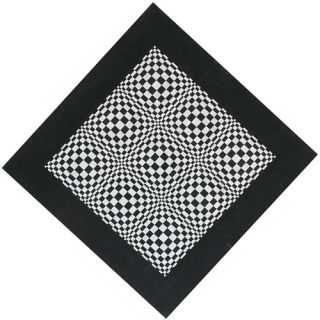
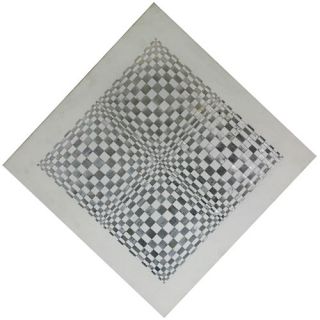
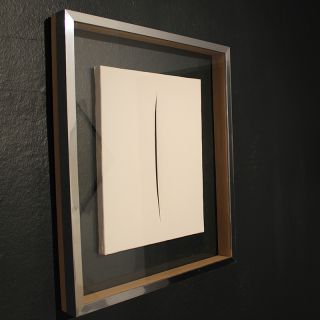 ITALIAN ZERO/CROSS REFERENCE
ITALIAN ZERO/CROSS REFERENCE BIANCO ASSOLUTO / WHITE
BIANCO ASSOLUTO / WHITE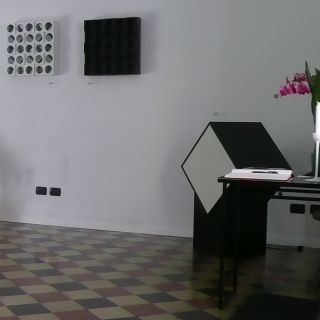 Leggere dagli anni sessanta: Milano
Leggere dagli anni sessanta: Milano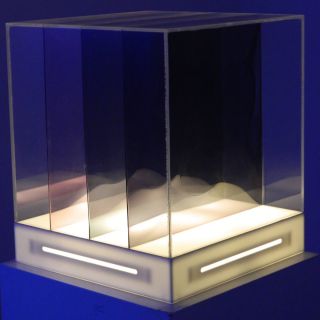 Licht und bewegung
Licht und bewegung